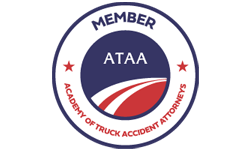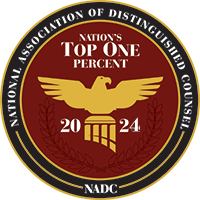The United States Environmental Protection Agency (EPA) issued a finalized rule regarding asbestos earlier this week. The March 18 news release shared by the EPA outlined a ban on current and future use of asbestos in our country.
The prohibition of the naturally occurring mineral specifically applies to chrysotile, the sole remaining type of asbestos fiber that was still allowed to be imported into our country for use in manufacturing projects. This new rule will form part of the Toxic Substance Control Act (TSCA). That federal chemical safety law was last amended in 2016 after receiving support from nearly all members of the U.S. Senate and House of Representatives.
The Long Road To Prohibiting the Import and Use of Asbestos in the U.S.
Although studies dating back to the 1960s and 1970s detailed the health dangers associated with asbestos, there wasn’t a proposed ban until 1989. The EPA press release chronicles how, in 1991, a judge decided that the 1989 ban wouldn’t be upheld.
Although newly banned in the U.S., the use of asbestos, a known carcinogen, has long been illegal in at least 50 other countries. This is one of the reasons why, when asked to respond to the new rule’s implementation, one environmental lobbyist who has long been championing the cause, pointed out that in excess of 50 years had been allowed to linger on between the EPA’s initial attempt to ban asbestos for specific uses and now. They noted the use of this carcinogenic fiber by polluters, which lingered on without them having to think twice about public health.
Health Risks This Naturally Occurring Fiber Poses
The press release reiterated the health risks asbestos exposure poses, including not only a high incidence rate of mesothelioma but also laryngeal, ovarian, and lung cancer. It also highlighted how an estimated 40,000 individuals die from asbestos-related diseases each year in the U.S.
U.S. Consumer Products Still Manufactured With This Known Carcinogen
Chrysotile asbestos, which was banned along with the implementation of this new rule, has historically been used in manufacturing high-friction automotive products like brake linings and gaskets. However, it’s also used to produce chlorine, which cleans drinking water, and brake blocks, which are used in the oil and gas industry.
The Seldom-Discussed Use of Asbestos in the Chlor-Alkali Industry
The use of chrysotile asbestos for manufacturing in the U.S. has been steadily declining over the past few decades. Companies that once used the fibers have since discontinued those lines of products or gone out of business. Chrysotile was last imported into the U.S. in 2022 by those in the chlor-alkali industry, which is a type of electrolysis process used to manufacture hydrogen, sodium hydroxide, and chlorine. The latter two, in particular, go to disinfecting wastewater and drinking water.
Apparently eight plants (which equates to at least one-third of U.S. chlorine manufacturers) still produce chlorine using asbestos diaphragms, despite there being other ways to do so. The EPA contends that those facilities in particular will need a “reasonable transition time” to change their manufacturing process without it impacting our nation’s water quality in the process.
The Asbestos Ban Won’t Go into Effect Immediately
The EPA contends it’s unsafe and unrealistic for manufacturers to completely do away with the use of asbestos right away. Thus, the federal agency established the following transition deadlines, which begin ticking down from now, the final rule’s effective date:
- Chlorine: The EPA has given six of the eight facilities still using asbestos diaphragms five years to transition to safer, non-toxin-containing membranes. If they have more than one plant, then the transition at the second and third facilities will have to occur by the eighth and twelfth-year marks. These facilities would have to show evidence to the EPA that they’re making progress along the way.
- Sheet gaskets: Two years from now, or five years if used in the production of titanium dioxide or in nuclear materials processing. Continued use of these asbestos-laden gaskets at the Department of Energy Savannah River site is permitted through 2037 to ensure proper disposal of nuclear waste and protection of workers from it.
- Aftermarket brakes and liners, gaskets, and oilfield brake blocks: Import and use bans go into effect six months from now.
The EPA now requires facilities where the expected phasing out of the use of asbestos lasts more than two years to devise a plan to minimize worker exposure to the toxic fibers and to keep documentation regarding the same.
Attempt To Eradicate This Carcinogen From U.S. Industry Isn’t Over
This finalized rule marks what the EPA refers to as a “milestone for chemical safety,” given how it says that, because of prior presidential administrations’ failures to implement the 2016 amendment, significant delays, leading to inadequate protections of our country’s residents, have occurred.
The EPA contends that President Biden’s implementation of the amendment forms part of a larger initiative of his “Cancer Moonshot” initiative, which is a multi-agency federal government initiative that aims to significantly reduce, if not eliminate, cancer rates in the U.S.
The press release discusses a second part of the EPA’s asbestos risk evaluation. It will focus on chrysotile and other types of asbestos, including talc, and legacy uses and disposal of these. The EPA contends that it planned to issue a draft of its risk evaluation report “soon” and that it planned to issue the final version of it at the end of the year, on December 1, 2024.
What The Asbestos Ban Means for Workers and Others
This ban marks a landmark victory for mesothelioma patients and those who work closely with them, such as health care professionals and attorneys like ours at Frost Law Firm, PC. Patients, public health officials, lobbyists, lawmakers, and attorneys have all been advocating for this prohibition for decades.
Right now, it’s likely that it will take just as many decades as many of us have spent fighting for the rights of individuals with asbestos-related illnesses to eradicate this carcinogen from homes, office buildings, auto repair shops, theaters, manufacturing plants, and other places where it has long been used. And countless others will likely gain exposure to toxic substances as a result, bringing it home to their families, resulting in a shortened life span for all.
If you or a family member has been diagnosed with a medical condition attributable to asbestos exposure, taking legal action may be an option available to you or them. If you’re successful in filing a suit, you may be able to recover monetary compensation that will aid in ensuring you receive the necessary quality care and have the best possible prognosis in light of the circumstances.
Contact our law office to discuss the onset of your asbestos-related disease and the next best steps that you should take in your case. There’s no cost for you to have a consultation with a lawyer from our firm to discuss your legal options if you have mesothelioma or another asbestos-related disease, and we don’t charge for our services unless we collect a settlement on your behalf.




















